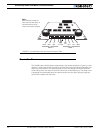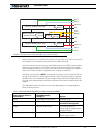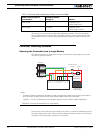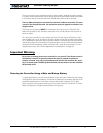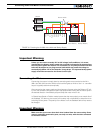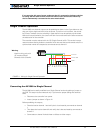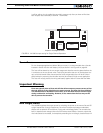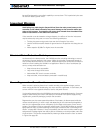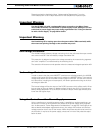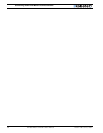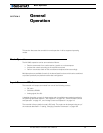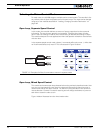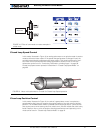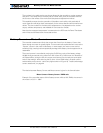
Connecting Power and Motors to the Controller
36 AX1500 Motor Controller User’s Manual Version 1.9b. June 1, 2007
Please download the Application Note “Understanding Regeneration” from the
www.roboteq.com for an in-depth discussion of this complex but important topic.
Important Warning
Use the AX1500 only with a rechargeable battery as supply to the Motor Power
wires (VMot terminals). If a transformer or power supply is used, damage to the con-
troller and/or power supply may occur during regeneration. See “Using the Control-
ler with a Power Supply” on page 36 for details.
Important Warning
Avoid switching Off or cutting open the main power cables (VMot terminals) while
the motors are spinning. Damage to the controller may occur.
Overvoltage Protection
The AX1500 includes a battery voltage monitoring circuit that will cause the output transis-
tors to be turned Off if the main battery voltage rises above 43V.
This protection is designed to prevent the voltage created by the motors during regenera-
tion to be “amplified” to unsafe levels by the switching circuit.
The controller will resume normal operation when the measured voltage drops below 43V.
Undervoltage Protection
In order to ensure that the power MOSFET transistors are switched properly, the AX1500
monitors the internal 12V power supply that is used by the MOSFET drivers. If the internal
voltage drops below 10V, the controller’s output stage is turned Off. The rest of the control-
ler’s electronics, including the microcomputer, will remain operational as long as the inter-
nal voltage is above 8V.
The internal voltage will be the output of the DC/DC converter which will be a solid 12V as
long as either of the main battery or backup voltage is higher than 12.5V. If the main and
backup voltage drop below 12.V, the DC/DC converter’s output will be approximately 0.5V
lower than the highest input.
Using the Controller with a Power Supply
Using a transformer or a switching power supply is possible but requires special care, as
the current will want to flow back from the motors to the power supply during regenera-
tion. As discussed in “Power Regeneration Considerations” on page 35, if the supply is not
able to absorb and dissipate regenerated current, the voltage will increase until the over-
voltage protection circuit cuts off the motors. While this process should not be harmful to
the controller, it may be to the power supply, unless one or more of the protective steps
below is taken:



